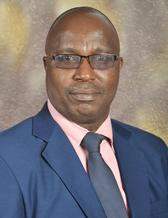How serious is water pollution from chemicals in Kenya and what can be done about it?
There has not been much research done in Africa about the occurrence of chemical pollutants but now this is starting to change. Three researchers from the University of Nairobi and UFZ in Germany presented recent research on chemical pollution in Kenyan water bodies and discussed governance challenges at a recent FRAM Centre webinar. The ambition is to start a long-term collaboration.
Dr. Faith Kandie is based at the Effect-Directed Analysis department at the Helmholtz Center for Environmental Research-UFZ Leipzig and enrolled at Goethe University, Frankfurt. Her research focuses on the multi-compartment occurrence of organic micropollutants and their contribution to schistosomiasis prevalence in western Kenya. Faith is continuously involved in collaborative projects between Germany and Kenyan partners to narrow the knowledge gap on organic micropollutants in Kenyan aquatic ecosystems.
Prof. James M. Mbaria is a holder of PhD in Pharmacology & Toxicology and is currently the Chairman of the Department of Public Health, Pharmacology and Toxicology, University of Nairobi. He has extensive knowledge, skills and experience in discipline pharmacology and toxicology. Professor Mbaria serves in numerous committees locally, regionally and internationally. He is a Trustee and member of the Toxicology Society of Kenya (TSOK). He has been involved formulation and implementation of guidelines for the regulation of medicinal use and pest control products. Prof Mbaria is a Council Member of Veterinary Medicine Directorate (VMD) Council and World Organization for Animal Health (OIE) Focal Point for Veterinary Medicinal Products in Kenya. Prof Mbaria is greatly involved in provision of academic leadership, consultancy and research activities. He published over 120 scholarly articles in refereed journals, learning modules, book chapters and scholarly presentations.
Dr. Collins Odote is an environmental lawyer and a Senior Lecturer at the University of Nairobi. He currently serves at the Institution as the Director for the centre for Advanced Studies in Environmental Law and Policy (CASELAP), a multi-disciplinary and postgraduate teaching and research unit. He has researched and written widely on various environmental governance issues. He was the lead researcher for FRAM-University of Nairobi scoping study on Scoping and Impacts of Multiple Chemical Pollution on Kenya’s Lake Victoria.



